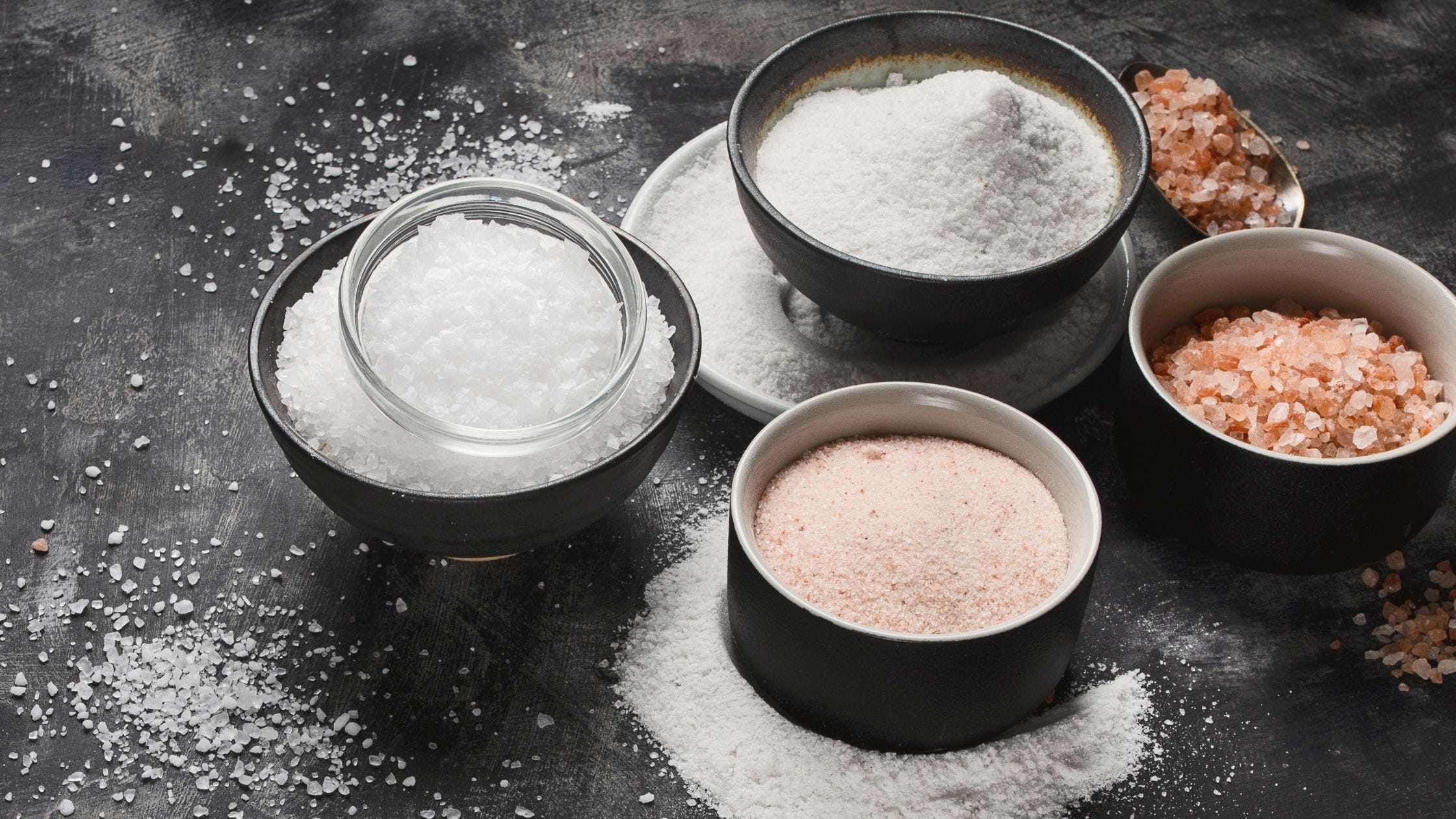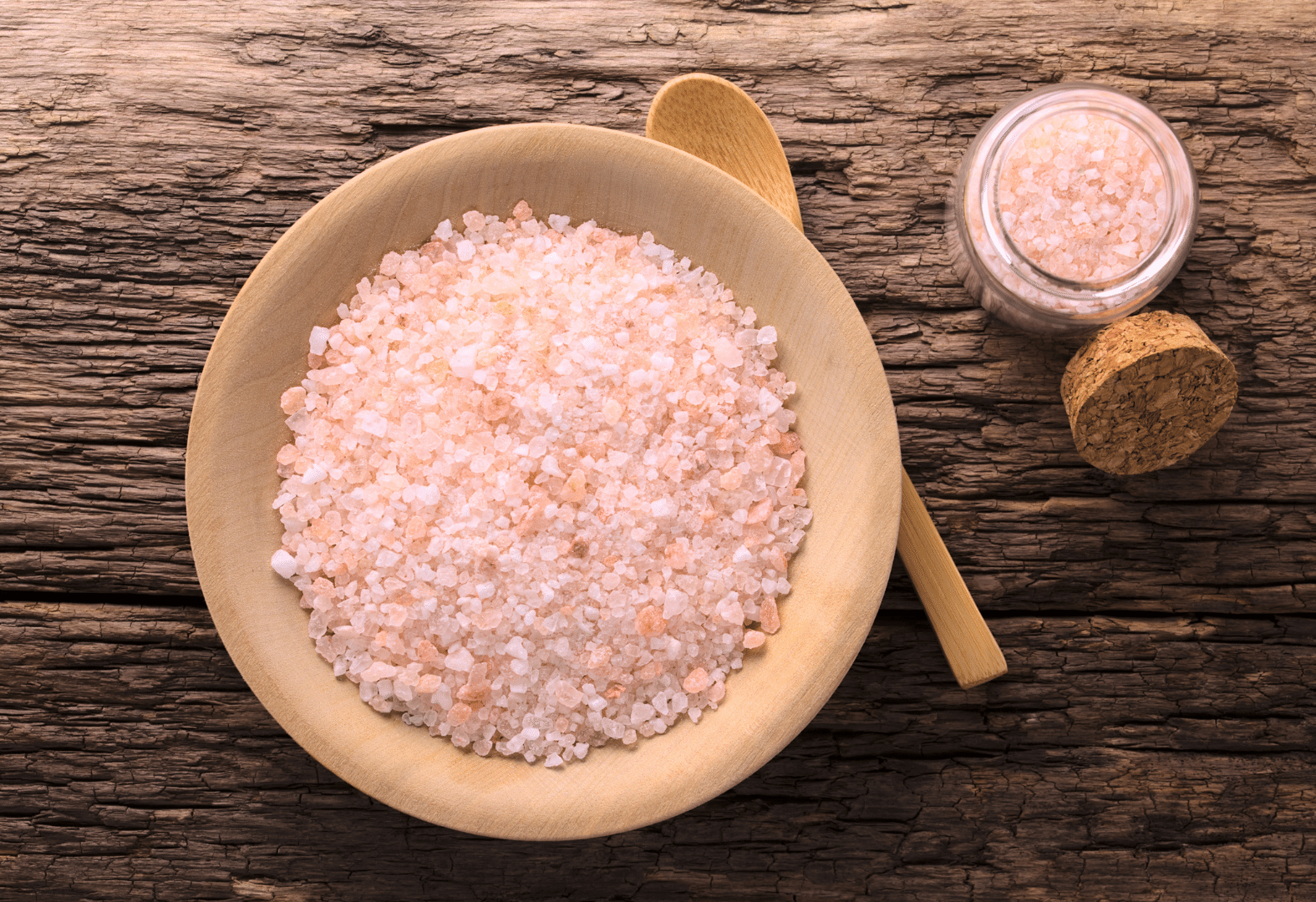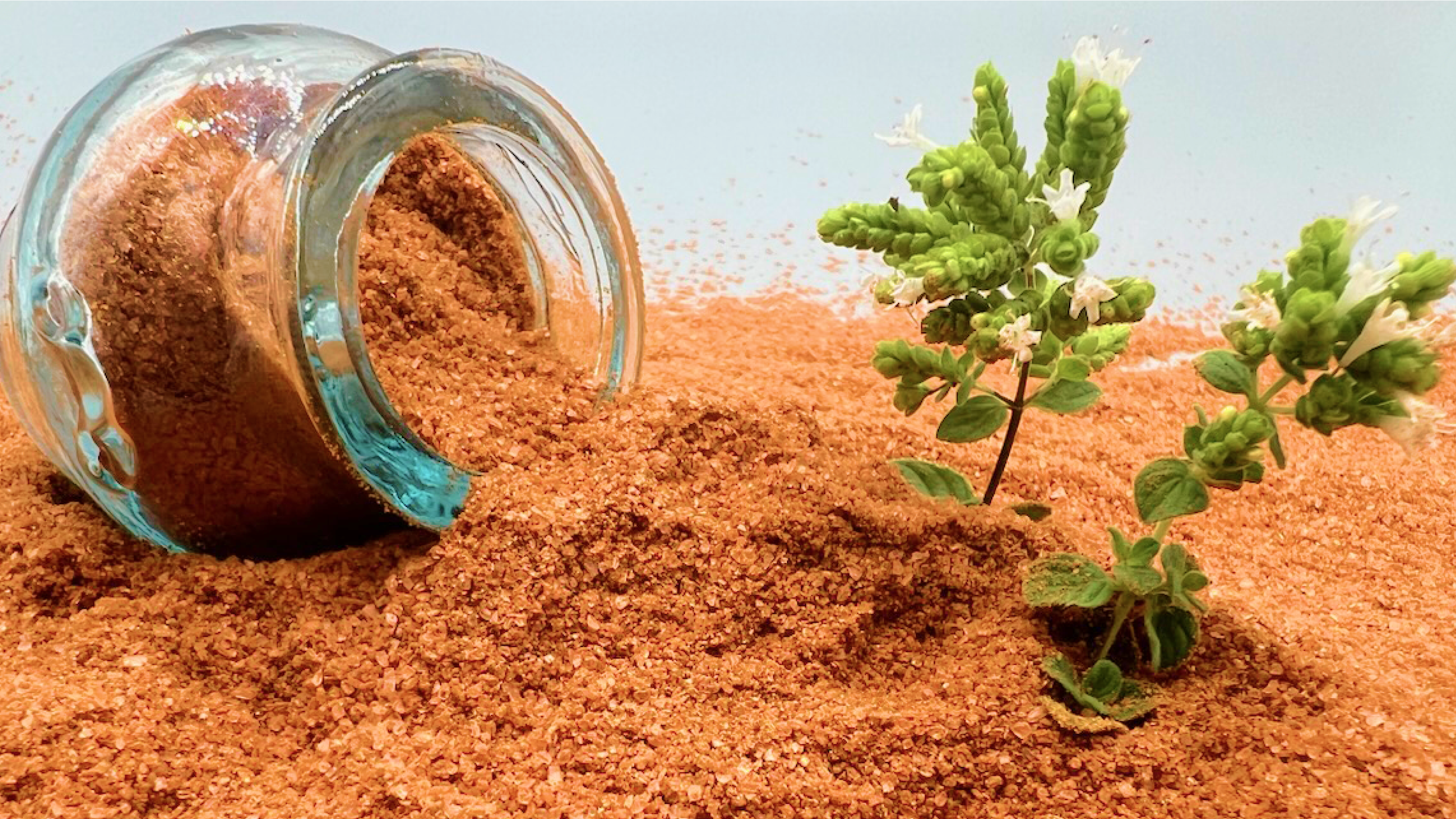
Premier Pink Sea Salt – Less Sodium, More Minerals, Superior Flavor
We are passionate about good nutrition, and our enthusiasm for quality salt is no exception. Salt has played a vital role in human civilization as a flavor enhancer and food preservative. Sodium, a key element in salt, is essential for various physiological functions, including regulating extracellular fluid volume, nerve conduction, and muscle function.1 As a natural source of fluid-balancing electrolytes, high-quality salt can be considered a functional food because of its role as an essential and flavorful part of a healthy diet.
Quantum Reflex Analysis (QRA) and Bio-Kinesiology Testing
To ensure we recommend only the best, we used a unique method to evaluate different salts: Quantum Reflex Analysis (QRA). QRA is an advanced form of bio-kinesiology testing that can assess various salts' quality and bio-energetic properties. Rooted in the emerging field of Biofield science, this method is based on the principle that the body has a unique biofield. This complex energy field plays a crucial role in maintaining and regulating the body's dynamic balance. 2 Since the biofield is influenced by different substances, QRA employs muscle testing and energy field assessments to identify the most beneficial and harmonious products for the body. Through extensive QRA evaluations, we consistently find Premier Pink Salt possesses superior energetic qualities compared to other salts.
Aside from the bio-energetic properties, what type of salt is best for our health? Before we answer that, let's take a closer look at the different types of salt currently on the market.
Refined White Table Salt – Our Rating: Three Thumbs Down (Yes, that's worse than Two Thumbs Down!)
Do we really need to talk about refined white table salt? OK, we'll throw it in here for comparison's sake. Regular refined white salt (aka "table salt") can be considered the junk food of the salt world. The manufacturing processes that create refined table salt strip all of its natural minerals stripped away, except for sodium chloride. This ruins the salt's natural sodium balance and results in the loss of invaluable macro- and microminerals.
In addition, anti-clumping agents, including sodium aluminosilicate, are added to refined table salt. As a raw material, sodium aluminosilicate is commonly found in paper, plastics, cosmetics, and pharmaceuticals, containing approximately 7.8% aluminum. Due to its prevalence in food processing, exposure levels can exceed the EU's Tolerable Weekly Intake (TWI) of 1 mg/kg per week for dietary aluminum from all sources.3 The bioaccumulation of aluminum in the brain has been linked to adverse effects such as neurotoxicity and neurodegeneration.
Iodine, in the form of sodium iodide, has also been added to salt, which leaves people at risk of iodine overload, depending on their salt intake. One study showed that refined white salt can promote the development of autoimmune disease by increasing pro-inflammatory macrophages and impairing regulatory T cells (Tregs), which generally help prevent autoimmunity.4 Additionally, iodine excess is associated with subclinical or overt thyroid dysfunction in patients with specific risk factors.5
Bio-Testing: After using bio-kinesiology testing (an advanced form of kinesiological muscle testing), our tests showed regular refined white table salt tests quite poorly. Enough said. We recommend avoiding refined white table salt and its hidden added chemicals … period.
Himalayan and U.S. Pink Salts – Our Rating: Two Thumbs Down
Aside from a reduction in sodium content, the difference between pink and white salt is its trace amounts of a diverse array of essential macro- and microminerals. However, whether from the ancient salt mines of the Himalayas or upstate New York in Syracuse, surface contamination of salt caves may compromise their purity and quality. Given the increased consumer interest in pink salt and the potential risk of harmful heavy metals and microplastic contamination, an investigation into the mineral composition of dietary pink salt was warranted.
In 2020, an independent research company, Nutrition Research Australia, tested 31 samples of pink salts and found that the nutrient content widely varied among the salts, such as iron and calcium levels.1 While pink salt contains trace amounts of essential nutrients, including iron, zinc, and calcium, some samples also contain impurities or relatively large amounts of harmful heavy metals, such as arsenic, lead, and cadmium.1 Regarding the human-inflicted epidemic of microplastic (MP) contamination, research indicated that terrestrial salts such as Himalayan pink salt were higher in MP than marine-harvested salts.6 From a bioenergetics point of view, the typical lack of sunlight in underground mines seems to give these salts a "dead" or deficient feeling.
Bio-Testing: Our bio-kinesiology testing of several Himalayan and U.S. pink salt brands did not test well.
Sea Salt from France's Ocean Areas – Our Rating: One Thumb Up
Another type of sea salt (not pink in color) is harvested from ocean areas near the coast of France. We love that this sea salt is not refined and therefore has its original vital minerals and has been sourced from living ocean water, which naturally has had tremendous ongoing exposure to direct sunlight.
What we don't love is that some types of this salt are still damp or "wet" when they are packaged, which may encourage the microscopic growth of undesirable microbes.
Some people also believe that sea salt derived from ocean water may contain microscopic plastic particles. While we certainly agree that microplastic particles are undesirable, the truth is that ALL sea salts, whether from a mine or an ocean, must be harvested and processed). Salt may inevitably be exposed to microplastic particles during this manufacturing extraction process. Manufacturers can take extra steps to protect against MP exposure by storing salts in glass or non-leaching storage containers.
Bio-Testing: Our bio-kinesiology testing of ocean-derived sea salt from France's sea areas tested as partially acceptable.
Premier Pink Salt: the winner of our Best Salt for Health contest – A BIG Two Thumbs Up!
When evaluating and selecting our sea salt sources, we choose sustainable practices to help preserve our planet for many generations. We've vetted the entire salt industry to find what we consider to be the best premier quality. Premier Pink Salt is a flavorful blend of two premium, untreated, unheated, solar-dried salts, providing a full spectrum of minerals naturally found in ocean water.
The first salt comes from the pristine waters of the Australian Sea, harvested through solar evaporation in seawater ponds. This raw crystalline salt has been exposed to millions of hours of direct sunlight, absorbing the full spectrum of life-affirming solar frequencies. Unlike salts from dark underground mines, this salt retains its radiant energy.
The second salt in our blend is pink Alaea Hawaiian sea salt. This salt, enriched with pink Alaea clay from the Hawaiian Islands, has also been bathed in countless hours of sunlight. The clay imparts a pinkish color and is naturally rich in trace minerals, offering gentle cleansing properties. Known for its purifying, mineral-rich properties, this solar-dried mixture of purified red clay-derived sea salt has been a traditional table salt blend used by Native Hawaiians for centuries.
Importantly, Premier Pink Salt is free from common anti-clumping agents used in typical white, refined salts, such as aluminum, white sugar, stearic acid, and sodium ferrocyanide, ensuring a pure, non-toxic product.
Bio-Testing: Our bio-kinesiology testing of Premier Pink Salt tested strong as a bio-compatible, revitalizing choice making it the overall winner of the Best Salt for Health contest!
Electrolyte and Fluid Balance: The Role of Sodium and Trace Minerals
Premier Pink Salt isn't just about taste and purity; it's also about health. Sodium and the trace minerals found in our Premier Pink Salt are essential for maintaining electrolyte and fluid balance in the body. Electrolytes, such as sodium, potassium, and magnesium, play crucial roles in regulating nerve and muscle function, hydration, blood pH, blood pressure, and rebuilding damaged tissues.1
When your body is hot or dehydrated, especially during intense physical activity or in hot climates, it loses electrolytes through sweat. Adding a pinch of Premier Pink Salt to your water can help retain fluids and keep you hydrated. The natural sodium and trace minerals in Premier Pink Salt support the body's ability to maintain fluid balance, helping to prevent dehydration and heat-related illnesses.
One popular method to enhance hydration and mineral intake is through sole water, a solution that dissolves pink salt in water until it reaches saturation. When prepared with high-quality salt like Premier Pink Salt, sole water can provide a concentrated source of electrolytes and trace minerals. Sole water may support optimal hydration levels and overall health. While some view sole water as a fad, its benefits are grounded in the science of electrolytes and their essential roles in maintaining health, particularly during times of increased fluid loss.7 However, consuming it in moderation and as part of a balanced diet is essential to avoid excessive sodium intake.
More Minerals, Premium-Quality, Superior Flavor
Premier Pink Salt's combination of pristine sea salts and its superior flavor has won the recommendation of many practitioners, nutritionists, chefs, and culinary enthusiasts for over 30 years.
Our 35+ years of expertise as a sustainably sourced, premium-quality sea salt brand has given us the experience and knowledge to ensure the highest quality and most beneficial salt products for our customers.
‡ The products and claims made about specific products on or through this Site have not been evaluated by the United States Food and Drug Administration and are not approved to diagnose, treat, cure, or prevent disease.
‡ This Site is not intended to provide diagnosis, treatment, or medical advice. Products, services, information, and other content provided on this Site, including information that may be provided directly or by linking to third-party websites are provided for informational purposes only. Please consult accredited healthcare professional organizations, evidence-based herbal monographs, and published clinical research regarding any medical or health-related diagnosis or treatment options.
_________________________________________
References
- Fayet-Moore F, Wibisono C, Carr P, et al. An Analysis of the Mineral Composition of Pink Salt Available in Australia. Foods. 2020;9(10):1490. Published 2020 Oct 19. doi:10.3390/foods9101490. Available at: https://www.ncbi.nlm.nih.gov/pmc/articles/PMC7603209/. Accessed on 7/3/2024.
- Rubik B, Muehsam D, Hammerschlag R, Jain S. Biofield Science and Healing: History, Terminology, and Concepts. Glob Adv Health Med. 2015;4(Suppl):8-14. doi:10.7453/gahmj.2015.038.suppl. Available at: https://www.ncbi.nlm.nih.gov/pmc/articles/PMC4654789/. Accessed on 7/3/24.
- Younes, M., Aquilina, G., Castle, L., et al. EFSA Journal, 18; 2020. Re‐evaluation of sodium aluminium silicate (E 554) and potassium aluminium silicate (E 555) as food additives. Available at https://www.ncbi.nlm.nih.gov/pmc/articles/PMC7448050/pdf/EFS2-18-e06152.pdf. Accessed on 7/5/2024.
- S. Dahan et. Al., “Dietary factors in rheumatic autoimmune diseases: a recipe for therapy?” Nature Reviews Rheumatology, April, 2017. Available at https://www.nature.com/articles/nrrheum.2017.42
- Southern AP, Anastasopoulou C, Jwayyed S. Iodine Toxicity. [Updated 2024 May 2]. In: StatPearls [Internet]. Treasure Island (FL): StatPearls Publishing; 2024 Jan-. Available from: https://www.ncbi.nlm.nih.gov/books/NBK560770/. Accessed on 7/5/2024.
- Kuttykattil A, Raju S, Vanka KS, et al. Consuming microplastics? Investigation of commercial salts as a source of microplastics (MPs) in diet. Environ Sci Pollut Res Int. 2023;30(1):930-942. doi:10.1007/s11356-022-22101-0. Available at: https://www.ncbi.nlm.nih.gov/pmc/articles/PMC9813175/. Accessed on 7/5/2024.
- Streit, Lizzie, MS, RDN, LD — What Is Sole Water, and Does It Have Benefits? Healthline.com Updated on July 13, 2023. Available at: https://www.healthline.com/nutrition/sole-water. Accessed on 7/5/2024.









